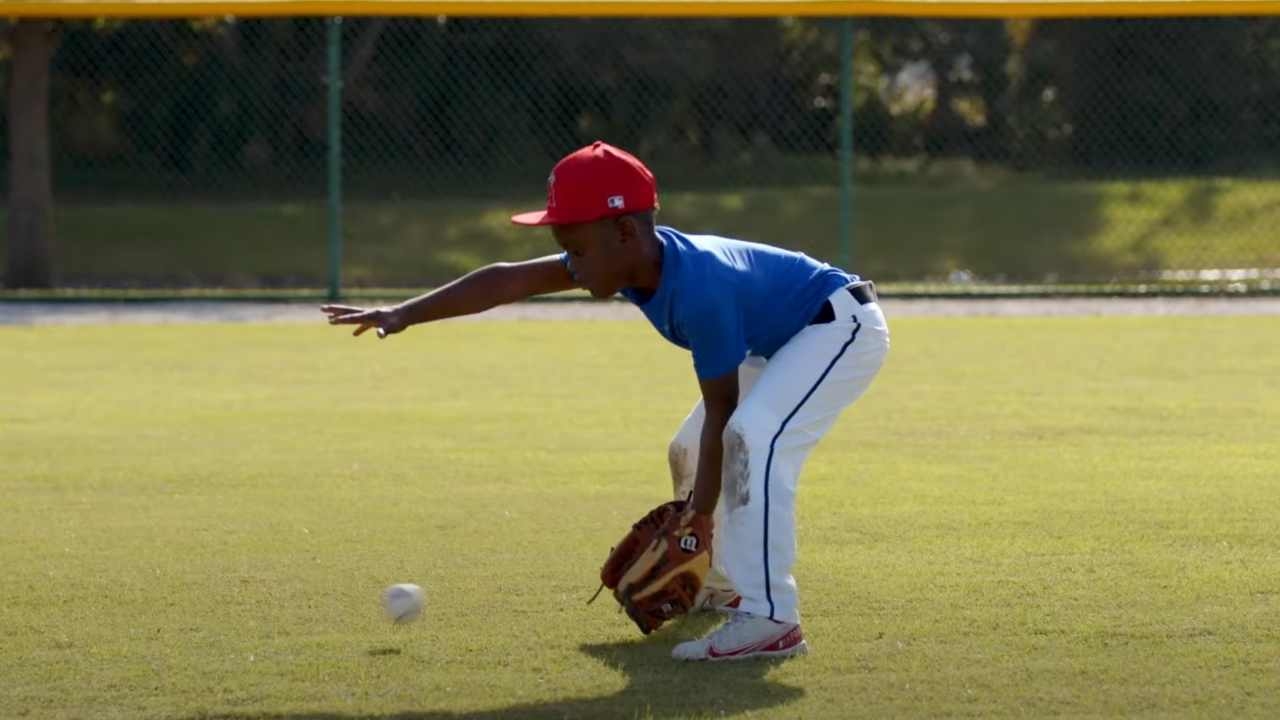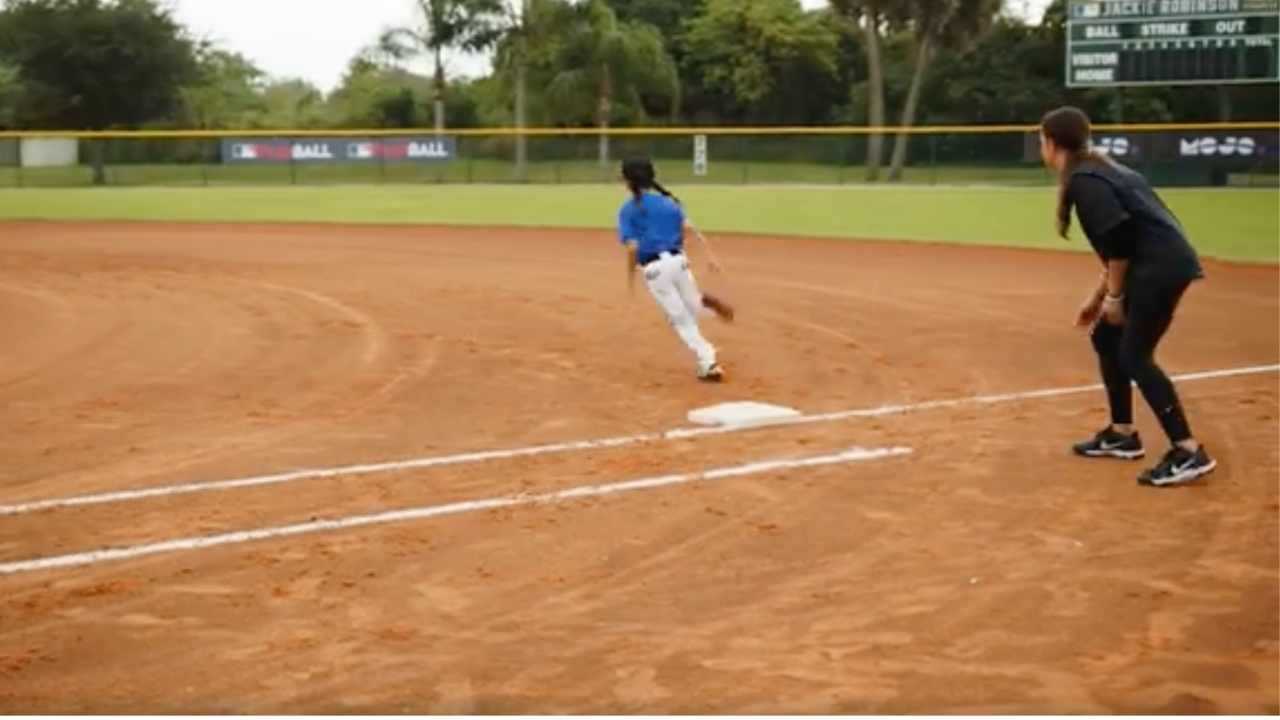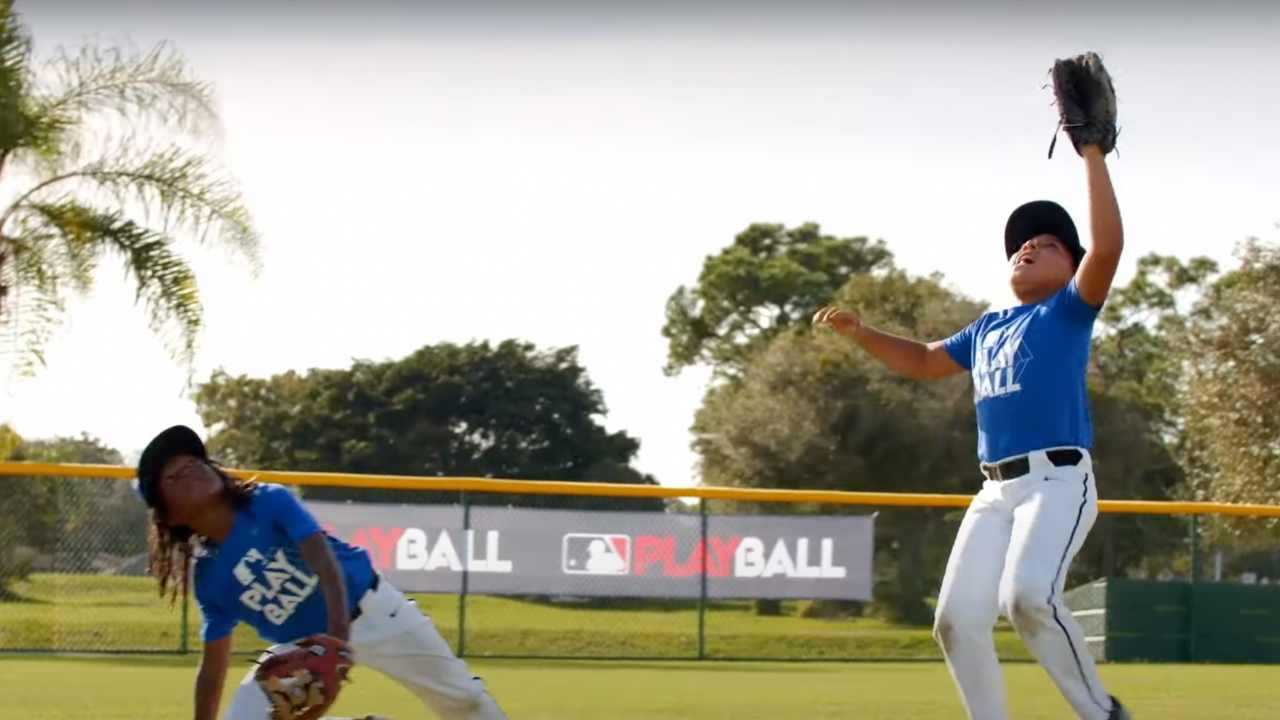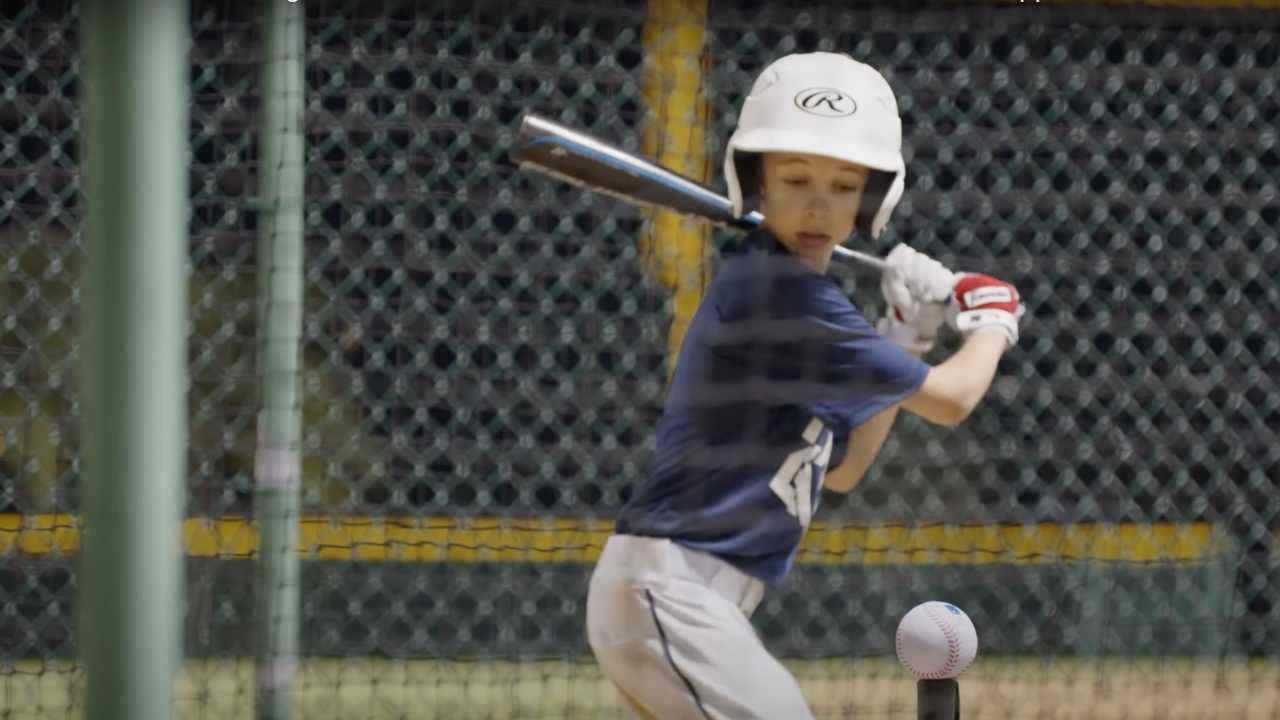Introducing: The Ground Ball
Stop, pop and throw
Sue Pierce
| 3 min read

For the youngest baseball and softball players, fielding a ground ball is a numbers game – more balls will be rolling on the ground than hit high into center field. Teaching your players how to stop those grounders will make playing defense more exciting.
And while scooping up the ball is important, knowing what to do with the ball once it’s scooped is next level.
The approach
It all begins with ready position – palms up, knees bent, ready for whatever the next play brings. Then, if a grounder gets hit in the infield, encourage your players to charge the ball as it’s rolling toward them. It’s better to be early than late so there’s enough time to get into position. It’s a gradual, low-and-slow approach. “Land like an airplane, not like a helicopter,” says longtime youth baseball coach Dan Keller.
The fielding triangle
To properly field a ground ball, players should be in a fielding triangle position. The feet are two corners of the triangle, and the glove is on the ground out in front is the top of the triangle.
Kids can physically draw the triangle in the dirt, says Keller. Then have them step into the triangle – right foot first, then left, then bend at the knees to get their hands out and down.
The fielding triangle gets kids down low so they can see hops better and easily adjust their bodies to get in front of the ball. “It’s the optimal position for fielding success,” adds Keller.
Three steps
The ground ball is now in the fielder’s glove — now, what? Keller likes to teach what happens next in three steps. He follows a “ground up” philosophy, starting with the feet.
Step one: Exit footwork. Best way to teach kids how to field grounders? Work backward.
Start from the triangle position – the ball already in the player’s glove. Now think exit footwork. A right-handed thrower steps with their right foot, ankle eye toward their target, then left foot steps. Arms go up in a throwing position, shuffle and throw. Reverse the foot order for lefties.
Getting exit footwork down is key is making a fast play. The more reps, the more automatic it becomes.
Step two: The pop. Now, the exit footwork gets a little peppier. The right step, left step taken after the ball is in the glove becomes a pop. “It’s that athletic movement, like a surfer popping up to his surfboard,” says Keller. “It becomes a jump turn.” Still keeping that right-left rhythm, the player makes a quick jump from the fielding triangle to the throwing position.
Step three: The side shuffle. “Add lateral movement,” says Keller. Roll balls toward one side of a player so they have to shuffle sideways to center their body to the ball. Then they can get low and field it between their feet from the triangle position. Time to make the play! Kids finish it up with a pop, shuffle and throw.
Dan Keller is part of MOJO’s Partnerships & Strategy team.




